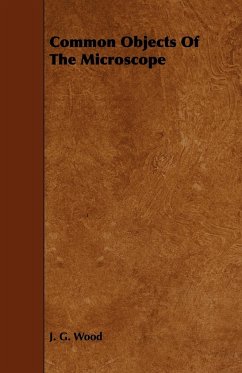
Common Objects of the Microscope
Versandkostenfrei!
Versandfertig in über 4 Wochen
22,99 €
inkl. MwSt.
Weitere Ausgaben:

PAYBACK Punkte
11 °P sammeln!
Common Objects of the Microscope, written by John George Wood and Edward Collins Bousfield, serves as a comprehensive guide to the world of microscopy, tailored for both amateur enthusiasts and seasoned scientists. Originally published around 1900, this book delves into the intricate details of using and understanding the microscope, offering insights into the preparation and examination of various specimens. The book meticulously covers a range of subjects suitable for microscopic study, from botanical structures and animal tissues to minerals and manufactured objects. With detailed illustrat...
Common Objects of the Microscope, written by John George Wood and Edward Collins Bousfield, serves as a comprehensive guide to the world of microscopy, tailored for both amateur enthusiasts and seasoned scientists. Originally published around 1900, this book delves into the intricate details of using and understanding the microscope, offering insights into the preparation and examination of various specimens. The book meticulously covers a range of subjects suitable for microscopic study, from botanical structures and animal tissues to minerals and manufactured objects. With detailed illustrations and clear explanations, readers are guided through the techniques required to reveal the hidden wonders of the microscopic world. This edition preserves the original text and illustrations, ensuring that readers can appreciate the historical context and scientific curiosity of the era. This work has been selected by scholars as being culturally important, and is part of the knowledge base of civilization as we know it. This work was reproduced from the original artifact, and remains as true to the original work as possible. Therefore, you will see the original copyright references, library stamps (as most of these works have been housed in our most important libraries around the world), and other notations in the work. This work is in the public domain in the United States of America, and possibly other nations. Within the United States, you may freely copy and distribute this work, as no entity (individual or corporate) has a copyright on the body of the work. As a reproduction of a historical artifact, this work may contain missing or blurred pages, poor pictures, errant marks, etc. Scholars believe, and we concur, that this work is important enough to be preserved, reproduced, and made generally available to the public. We appreciate your support of the preservation process, and thank you for being an important part of keeping this knowledge alive and relevant.












